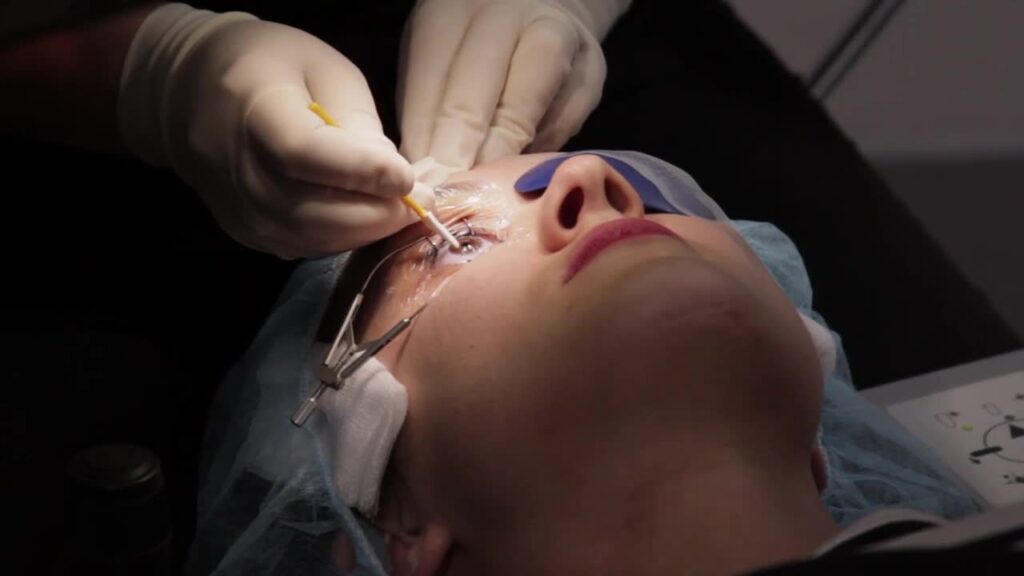In today’s fast-paced world, where our vision plays a crucial role in our daily activities, the advancements in medical technology have brought about incredible solutions for those struggling with imperfect vision. One such marvel is laser eye surgery. This revolutionary procedure has transformed the lives of millions, providing them with clear, crisp vision and freeing them from the shackles of glasses or contact lenses. In this article, we will explore the intricacies of laser eye surgery, its various types, the process involved, the benefits it offers, and dispel some of the common myths surrounding it.
Understanding the Basics of Laser Eye Surgery
The Science Behind the Precision
Before we delve deeper into the world of laser eye surgery Sydney, it’s crucial to grasp the scientific principles that make this procedure possible. At the core of laser eye surgery lies the remarkable ability of lasers to reshape the cornea – the transparent front part of the eye – to correct refractive errors.
The process begins with an excimer laser, an ultraviolet laser specifically designed for ophthalmic use. This laser emits a cool, pulsating beam of light that precisely and gently sculpts the cornea, reshaping it to restore perfect vision. This precise laser technology allows for exceptional accuracy and reproducibility, leading to remarkable surgical outcomes.
But how does the laser know exactly how much tissue to remove? This is where advanced computer algorithms come into play. Before the surgery, detailed measurements of the patient’s eye are taken using sophisticated imaging technology. These measurements are then fed into the laser system, which calculates the precise amount of tissue to be removed to achieve the desired correction. This level of precision ensures that each patient receives a customized treatment tailored to their unique visual needs.

The Evolution of Laser Eye Surgery
Laser eye surgery has come a long way since its introduction several decades ago. The development of this groundbreaking procedure is a testament to the relentless efforts of brilliant minds in the field of ophthalmology.
Initially, the excimer laser was primarily used for photorefractive keratectomy (PRK), the pioneer of laser eye surgeries. PRK involved removing the outer layer of the cornea before reshaping it with the laser. While successful, this procedure had a longer recovery period.
Enter LASIK, the most commonly performed laser eye surgery today. LASIK builds upon the principles of PRK but incorporates a surgical technique known as flap creation. This technique involves creating a thin flap on the cornea’s surface, which is then lifted before the laser reshapes the underlying tissue. The flap is then gently repositioned, leading to faster recovery and minimal discomfort.
More recently, another innovative procedure called SMILE (Small Incision Lenticule Extraction) has emerged. SMILE utilizes a femtosecond laser to create a small, disc-shaped piece of corneal tissue, which is then removed through a tiny incision. It offers the advantage of a minimally invasive approach while still achieving excellent visual outcomes.
As technology continues to advance, the future of laser eye surgery holds even more promise. Researchers are exploring new techniques and technologies, such as wavefront-guided treatments and femtosecond lasers with even higher precision. These advancements aim to further improve surgical outcomes and expand the range of treatable refractive errors, providing more people with the gift of clear vision.
The Different Types of Laser Eye Surgery
When it comes to correcting refractive errors, laser eye surgery has revolutionized the field of ophthalmology. There are several different types of laser eye surgery available today, each with its own unique benefits and considerations.
LASIK: The Most Common Procedure
LASIK, short for Laser-Assisted In Situ Keratomileusis, is the most commonly performed laser eye surgery procedure. It has helped millions of people worldwide achieve clear vision and reduce their dependence on glasses or contact lenses.
During LASIK, the surgeon uses either a microkeratome or a femtosecond laser to create a thin flap on the cornea. This flap is then lifted, and the excimer laser reshapes the underlying corneal tissue based on precise measurements obtained during the pre-surgical evaluation. The flap is then gently repositioned, acting as a natural bandage that promotes rapid healing and visual recovery.
One of the key advantages of LASIK is its versatility. It can effectively correct nearsightedness (myopia), farsightedness (hyperopia), and astigmatism, making it a suitable option for a wide range of individuals.
PRK: The Pioneer of Laser Eye Surgeries
Photorefractive keratectomy (PRK) is another type of laser eye surgery that paved the way for modern procedures like LASIK. Although it may not be as commonly performed today, PRK remains a viable option for certain individuals.
Unlike LASIK, PRK involves removing the epithelium, the outer layer of the cornea, before reshaping the underlying tissue with the excimer laser. While this technique results in a slightly longer recovery period compared to LASIK, it offers benefits such as a reduced risk of complications related to flap creation and suitability for individuals with thinner corneas or certain corneal irregularities.
SMILE: The Latest Innovation
SMILE, short for Small Incision Lenticule Extraction, is the latest addition to the laser eye surgery family. It has gained popularity due to its minimally invasive nature and the unique way it reshapes the cornea.
During a SMILE procedure, the surgeon creates a small, self-sealing incision and uses a single laser to remove a microscopic piece of tissue from the cornea. This reshapes the cornea and corrects the refractive error. The small incision eliminates the need for a corneal flap, resulting in less disruption to the corneal structure.
One of the advantages of SMILE is the potential for reduced post-operative dryness compared to other procedures. Additionally, patients often experience a quicker return to their daily routines after SMILE surgery.
It’s important to note that the suitability of each laser eye surgery procedure depends on various factors, including the individual’s eye health, prescription, and corneal thickness. Consulting with an experienced ophthalmologist is crucial to determine the most appropriate option for each patient.

The Process of Laser Eye Surgery
Pre-Surgery Preparations
Before undergoing laser eye surgery, it is crucial to consult with a qualified ophthalmologist who will conduct a comprehensive eye examination. This evaluation includes measuring the thickness of the cornea, assessing the refractive errors, and checking the overall health of your eyes.
Based on the evaluation results, the surgeon will determine whether you are a suitable candidate for laser eye surgery and discuss the potential risks and benefits associated with the procedure.
The Surgery Procedure Explained
The day of your laser eye surgery procedure arrives – a day that marks the beginning of your journey towards crystal-clear vision. You will be taken to a sterile operating room where you will be made comfortable on a reclining chair.
An anesthetic eye drop is administered to numb the eyes, ensuring a painless experience. Once your eyes are fully anesthetized, the surgeon proceeds with the selected laser eye surgery technique – LASIK, PRK, or SMILE – as discussed during the pre-operative consultation.
The entire process typically takes only a few minutes per eye, and you’ll be amazed at how quick and painless it is. Throughout the procedure, the surgeon, along with a team of skilled professionals, will closely monitor your comfort and well-being.
Using advanced laser technology, the surgeon will gently reshape the cornea, correcting the refractive errors that have been affecting your vision. The precision and accuracy of the laser ensure that the corneal tissue is reshaped with utmost care, resulting in improved visual acuity.
During the procedure, you may experience a slight pressure sensation or a temporary loss of vision as the laser is applied. However, rest assured that these sensations are normal and will quickly fade as the surgeon completes the treatment.
Post-Surgery Care and Recovery
As soon as the procedure is complete, you will be guided to a comfortable recovery area where you can relax. It is essential to have someone accompany you to ensure a smooth transition back home.
Your ophthalmologist will provide you with detailed instructions for post-operative care. Adhering to these instructions is crucial to ensure optimal healing and visual recovery. You may be advised to use medicated eye drops, avoid strenuous physical activities, and protect your eyes from dust and bright lights.
During the recovery period, it is normal to experience mild discomfort, itching, or blurry vision. However, rest assured that these are temporary effects and will gradually subside as your eyes heal.
It is important to attend all scheduled follow-up appointments with your ophthalmologist to monitor your progress and address any concerns you may have. These appointments allow the surgeon to assess your healing process and make any necessary adjustments to ensure the best possible outcome for your vision.
Remember, laser eye surgery is a life-changing procedure that can significantly improve your quality of life. With proper pre-surgery preparations, a skilled surgeon, and diligent post-operative care, you can confidently embark on this journey towards clearer, sharper vision.

Benefits and Risks of Laser Eye Surgery
The Life-Changing Benefits
The primary benefit of laser eye surgery is the unparalleled improvement in visual acuity it offers. Many patients achieve 20/20 vision or better, allowing them to engage in activities without being hindered by glasses or contacts. The freedom to wake up to clear vision is truly life-changing for individuals who have relied on corrective eyewear for most of their lives.
Moreover, laser eye surgery eliminates the inconvenience of maintaining and replacing glasses or contact lenses, making it a cost-effective solution in the long run.
Potential Risks and Complications
Like any surgical procedure, laser eye surgery carries some risks and potential complications. It is essential to understand and weigh these potential drawbacks against the benefits before making a decision.
Complications such as dry eyes, glare, halos, and nighttime vision disturbances can occur, although they are typically temporary and diminish over time. In rare cases, more severe complications, such as infection or corneal scarring, may arise, but they are extremely rare when performed by a skilled and experienced surgeon.
Debunking Common Myths About Laser Eye Surgery
Addressing Fears and Misconceptions
Laser eye surgery often sparks fears and misconceptions due to misinformation or exaggerated stories. It is essential to separate fact from fiction to make an informed decision.
One common misconception is that laser eye surgery is a painful procedure. In reality, anesthetic eye drops are used to numb the eyes, ensuring a pain-free experience. Some patients may experience slight pressure or discomfort during the surgery, but the entire process is relatively quick and virtually painless.
The Truth About Pain and Discomfort
While mild discomfort or irritation is common after laser eye surgery, it is typically manageable with over-the-counter pain relievers and subsides within a few days. The majority of patients report minimal to no pain during the recovery period.
It’s important to remember that each individual’s experience with laser eye surgery may vary, making it crucial to consult with a trusted ophthalmologist who can address any concerns or questions specific to your case.
In conclusion, laser eye surgery is a remarkable medical advancement that has transformed the lives of countless individuals by providing them with the gift of clear vision. Understanding its basics, including the science behind its precision and the evolution of different techniques, is crucial for anyone considering this life-changing procedure. With proper pre-surgery preparations, a seamless surgical process, and diligent post-surgery care, laser eye surgery can offer a liberating solution for refractive errors. By debunking common myths and addressing fears, we hope to empower individuals to make informed decisions about their eye health and explore the wonders of laser eye surgery.
More to read: Navigating the Benefits and Process of LASIK Surgery with Our Experts

